Creating a living room that feels both stylish and comfortable can be quite the challenge. If you’re drawn to the elegance of traditional decor but also appreciate contemporary minimalist vibes, transitional design may be your perfect solution. Transitional living rooms blend elements of both styles, resulting in a space that is inviting yet sophisticated. In this article, we’ll explore the six essential transitional living room design elements that can elevate your space and make it truly your own.
1. Neutral Color Palette
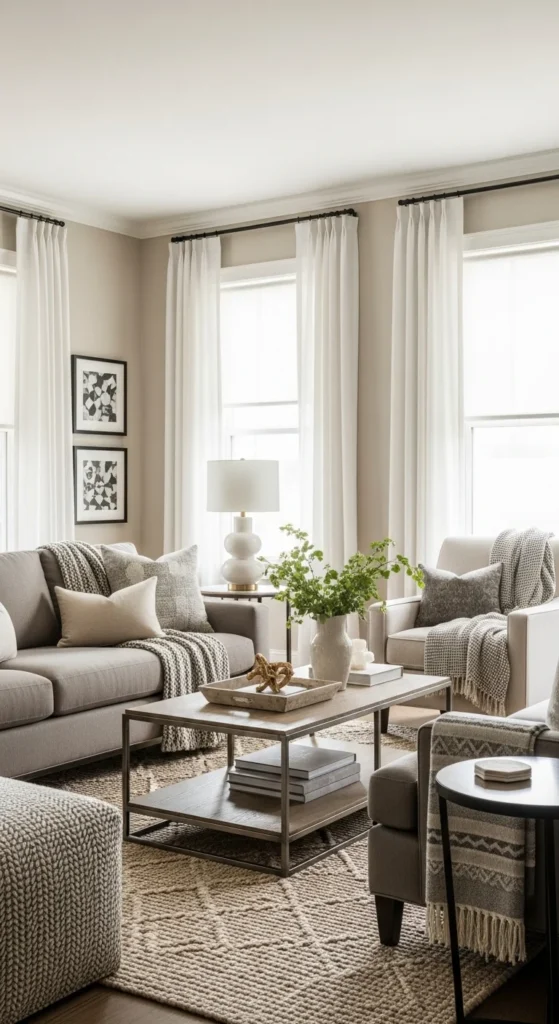
One of the key characteristics of transitional design is a neutral color palette. Think soft beiges, warm grays, and muted whites. This doesn’t mean your living room has to be dull. On the contrary, neutral colors set a serene backdrop that allows you to play with textures and accents throughout the room.
Why Choose a Neutral Palette?
Using a neutral palette in your living room offers several advantages:
- Versatility: Neutral colors can easily adapt to changing seasons or trends. You can switch out accessories, and your room will still look fresh and updated.
- Calmness: These colors are often associated with relaxation, making your living area a sanctuary where you can unwind after a busy day.
- Highlighting Features: A neutral backdrop allows for the boldness of furniture and decor elements to shine, drawing attention to unique pieces without overwhelming the space.
Tips for Incorporating Neutral Colors
To create a cohesive look, consider these tips:
- Balance: Mix various shades and tones to add depth. For example, pair a light beige sofa with darker taupe pillows.
- Textures: Introduce texture through fabric choices, such as a velvet throw or a chunky knit blanket, to keep the room from feeling flat.
- Accent Colors: Don’t shy away from using accent colors. Just ensure they are in harmony with your palette, perhaps introducing a calming blue or earthy green.
2. Comfortable Furniture
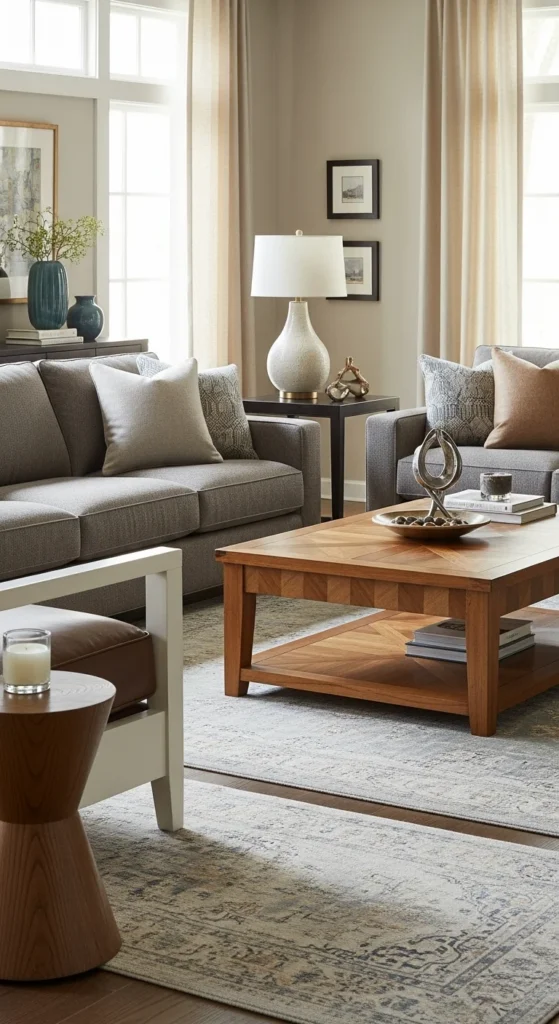
In transitional design, comfort is key. Your living room should invite lounging, reading, or just spending time with loved ones. While aesthetics matter, your furniture must be functional and inviting.
What to Look For
When selecting furniture for your living room, keep these factors in mind:
- Scale: Choose furniture that fits the scale of your room. Oversized pieces can make a small space feel cramped, while tiny furniture can feel lost in a larger area.
- Quality Materials: Invest in quality materials that will stand the test of time. Look for pieces with solid frames, durable upholstery, and comfortable cushions.
- Style Blend: Pointed elements of both classic and modern styling—such as a traditional-style sofa with contemporary coffee tables—can create an interesting and inviting space.
Examples of Comfortable Furniture
You could consider:
- A plush sectional for optimal seating.
- Accent chairs that combine traditional comfort with modern lines.
- A wooden coffee table that merges rustic charm with sleek, minimalist design.
3. Layered Lighting

Lighting plays a crucial role in setting the mood of a room, and it’s particularly important in transitional living rooms. Good lighting is about layering different sources of light to create a balanced atmosphere.
Types of Lighting to Incorporate
Consider integrating the following lighting options:
- Ambient Lighting: This is your primary source of light. Ceiling fixtures, like chandeliers or recessed lighting, could work.
- Task Lighting: For reading corners, consider stylish floor or table lamps that provide focused light.
- Accent Lighting: Use accent lighting to highlight artwork or architectural features. Sconces or spotlights can accomplish this effectively.
Tips for Effective Lighting
- Dimmers: Installing dimmer switches allows you to adjust the brightness based on the time of day or mood.
- Mix Styles: A mix of modern and traditional light fixtures can contribute to the transitional feel. For instance, a sleek pendant light above a rustic wooden table blends styles beautifully.
- Natural Light: Don’t overlook the power of natural light. Keep window treatments light or sheer to maximize sunlight during the day.
4. Functional Accessories
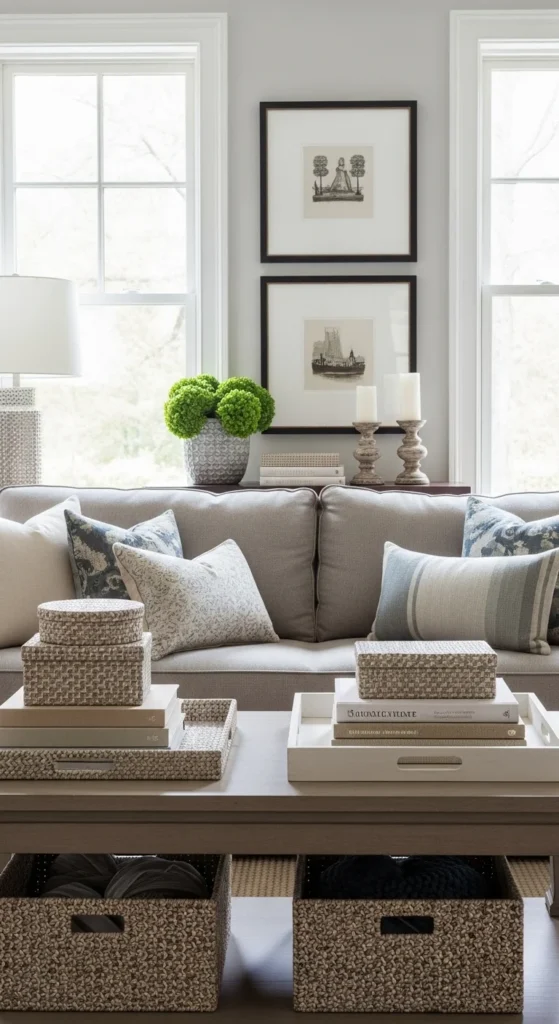
Accessories can bring a personalized touch to your living room. In transitional design, accessories should strike a balance between form and function, adding character without creating clutter.
Choosing Accessories Wisely
When selecting accessories, think about these aspects:
- Purpose: Choose items that serve a purpose—like stylish storage boxes or decorative trays that keep surfaces tidy.
- Artwork: Incorporate art that speaks to you, whether it’s a contemporary piece or a vintage-style painting. Place it at eye level for the best impact.
- Textiles: Pillows, rugs, and throws add warmth. Mix textures, such as knitted, woven, and silky materials, to add interest.
Accessorizing Tips
- Group Items: Create clusters of accessories to avoid the “store-bought” look. Use odd numbers, like three or five, for visual interest.
- Vary Heights: Include items of varying heights—think books stacked beneath a decorative piece—to create layers and depth.
- Seasonal Swaps: Implement a system for rotating accessories seasonally. This keeps your room feeling fresh and allows you to showcase beloved seasonal pieces.
5. Blending Textures
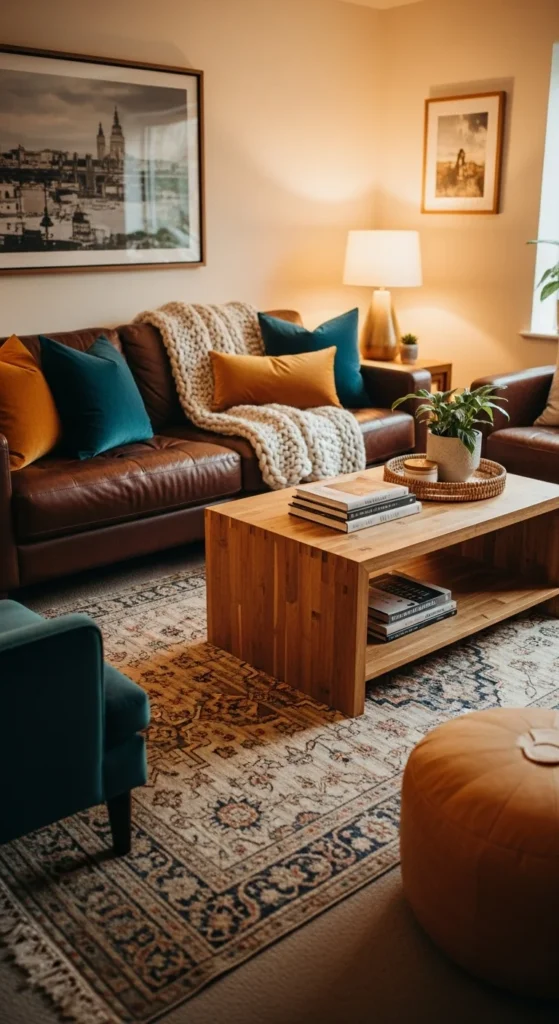
In transitional design, layers of texture are essential in cultivating a cozy yet sophisticated ambiance. Texture adds warmth and complexity, making your living room visually appealing and inviting.
How to Add Texture
You can introduce texture in various ways:
- Fabric Choices: Choose upholstered furniture in rich fabrics, such as linen or leather, and introduce various textile styles through throw pillows and blankets.
- Natural Elements: Include wooden pieces—like a reclaimed wood coffee table or driftwood decorations—to contrast with softer materials.
- Rugs: A well-chosen area rug can tie a room together. Look for rugs with patterns or intricate weaves that complement your overall theme.
Layering Tips
- Combine Different Textures: Pair smooth surfaces with coarse ones. For example, a glass coffee table beside a plush sofa can create balance.
- Texture in Decor: Don’t limit texture to furniture; consider botanical displays, wall hangings, or even decorative cushions as opportunities for layers.
- Balance is Key: Be mindful of the overall balance. Mixing too many textures can be overwhelming, so keep the arrangement harmonious.
6. Personal Touches
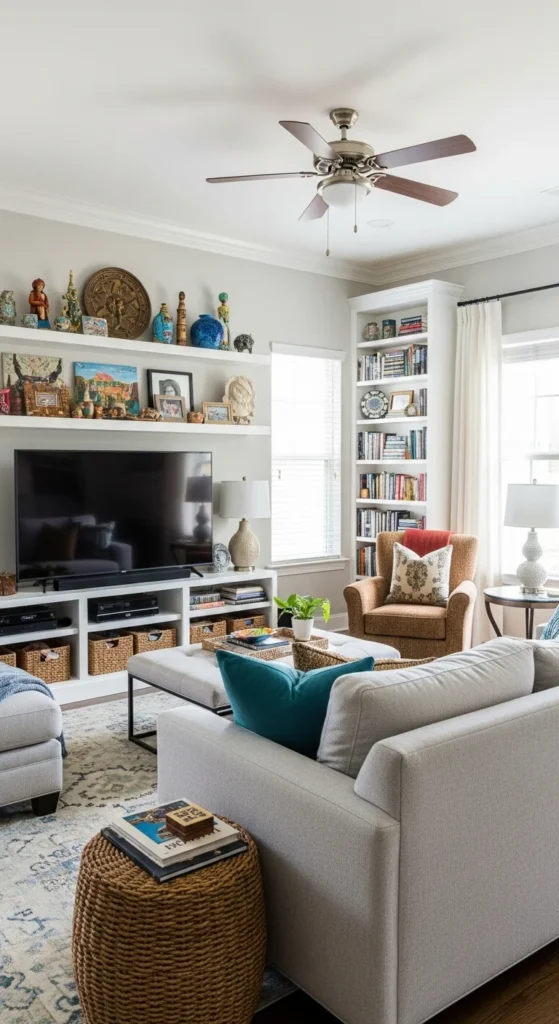
Finally, every living room should reflect your personality. Personal touches make the space uniquely yours and create a cozy atmosphere.
Adding Personalization
Consider the following ideas:
- Family Photos: Frame and display family photos in a gallery wall setting, mixing frame styles for a transitional touch.
- Travel Souvenirs: Showcase your adventures or memories through decor items that remind you of travels—think globally inspired art or handmade objects.
- Books and Hobbies: Create a cozy reading nook or display items related to your hobbies, such as a shelf of favorite books or artisanal crafts.
Personal Touch Tips
- Rotate Items: Don’t feel the need to display everything at once. Consider rotating your personal items seasonally or whenever you crave a refresh.
- Create Visual Stories: Arrange your personal items in a way that tells a story or evokes a memory, partnering them with artistic decor for a thoughtful vignette.
- Embrace Change: Allow your living room to evolve over time. As your style or experiences change, let your decor reflect that journey.
Transitional design concepts can transform your living room into a harmonious, stylish, and comfortable retreat that you and your loved ones will enjoy. By incorporating these six essential elements—neutral color palettes, comfortable furniture, layered lighting, functional accessories, blended textures, and personal touches—you can create a living space that’s both inviting and aesthetically pleasing.
Remember, the key to a successful transitional living room is balance. Balance traditional and modern elements and make choices that resonate with your personal style. Embrace the journey of designing your space, allowing it to unfold and evolve over time. Happy decorating!
